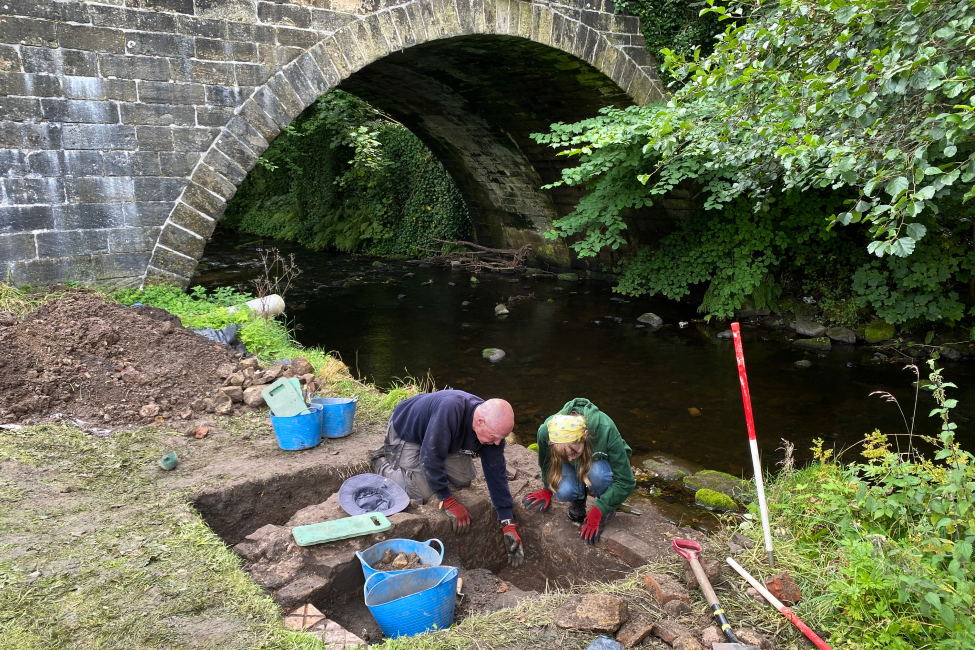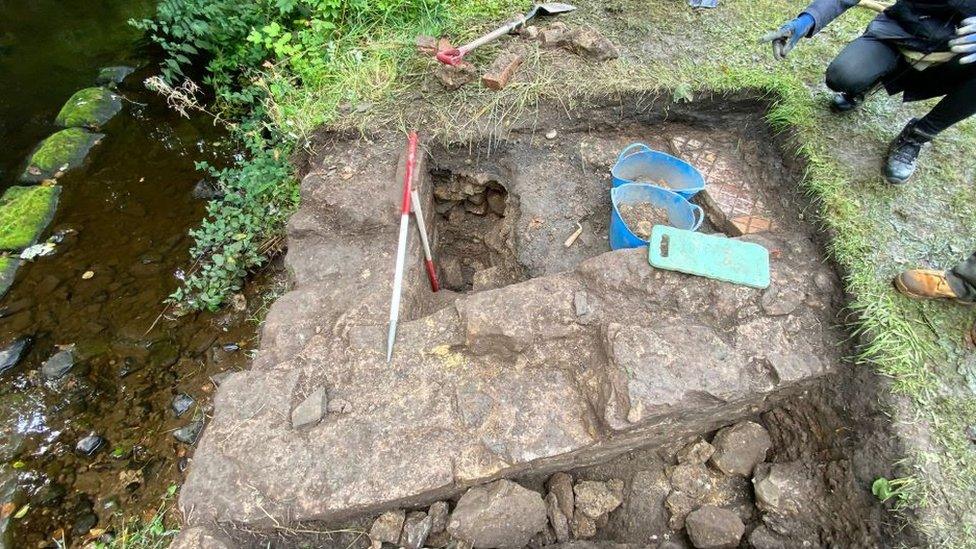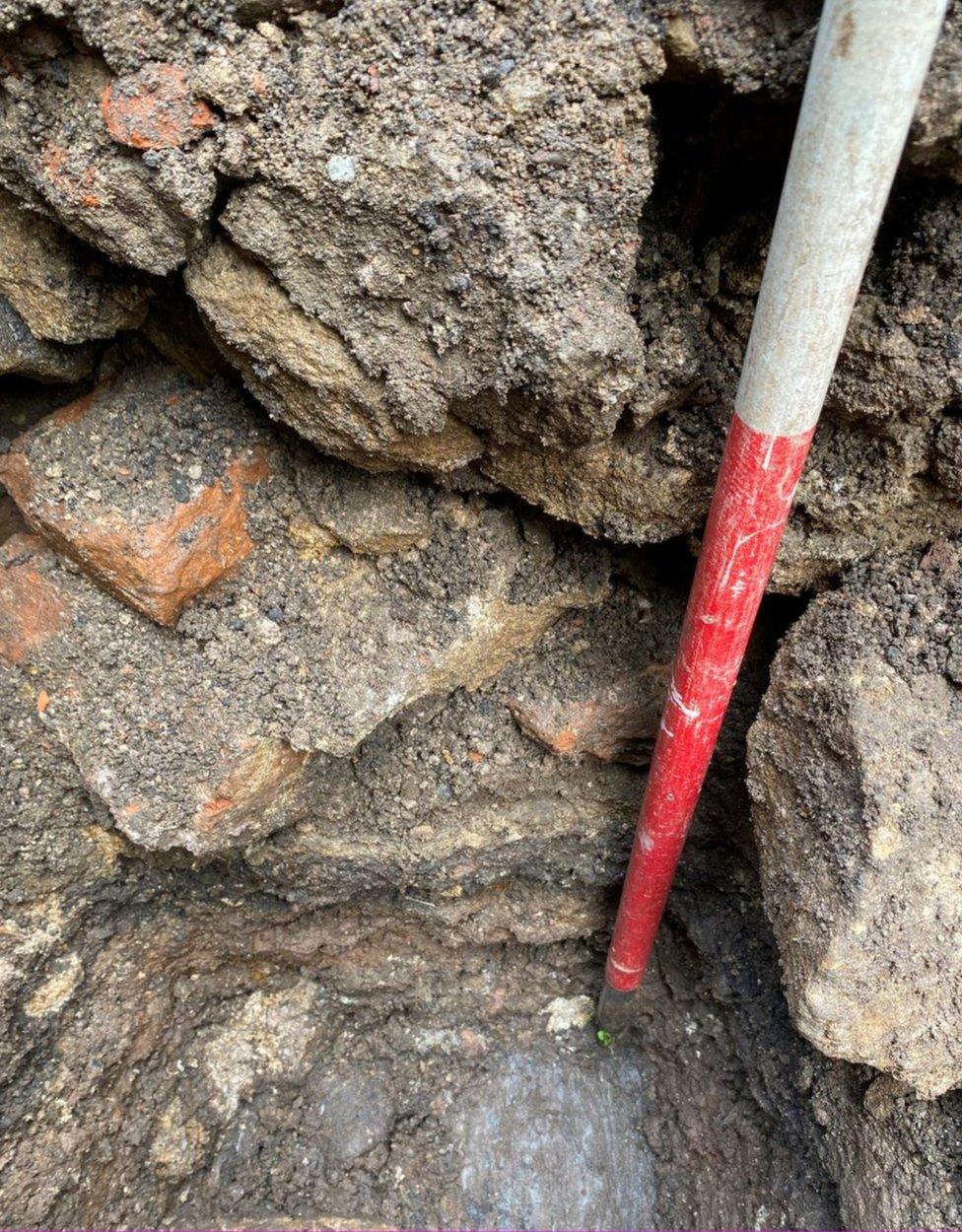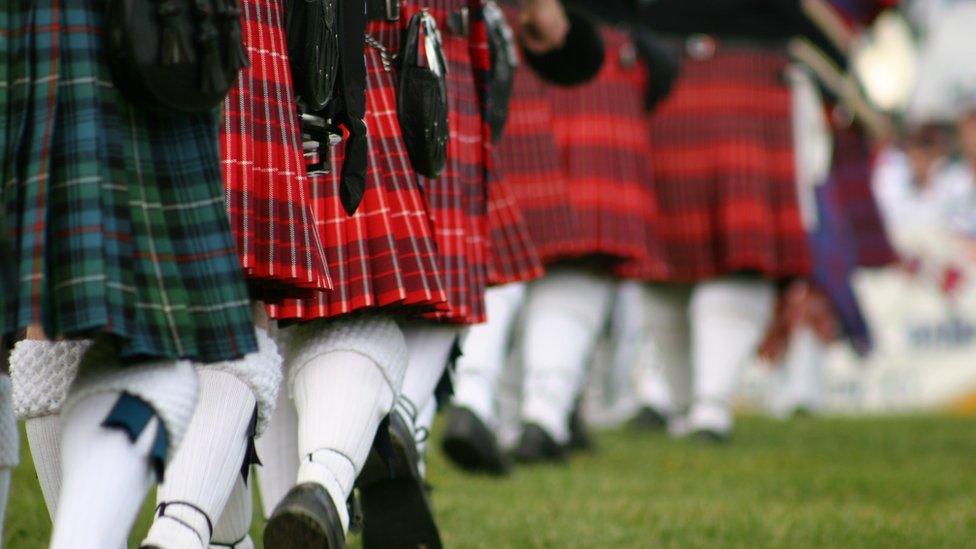Excavating the birthplace of Scotland's tartan industry
- Published

Excavations have so far uncovered foundations of demolished buildings
Archaeologists have been excavating a site they call the birthplace of Scotland's modern tartan industry.
Hundreds of people worked at Bannockburn's Wilson Mills at the height of production in the 1850s.
Only two buildings survive today, while workers' homes and earlier mills were demolished in 1950s and 60s.
Archaeologist Dr Murray Cook said it was an "astonishingly important but poorly recognised" site where tartan was first made on an industrial scale.
Dr Cook, who has been leading the Rampant Scotland digs, said: "In the 1850s the mills complex was huge and straddled the Bannock Burn.
"People told of the burn running lurid red and pink with the dyes."
Foundations of properties cleared away more than 60 years ago have been uncovered so far. Further excavations are planned for next year.
Dr Cook said the site at the Haugh in Bannockburn, Stirling, was home to a smaller mill that was producing at a time of turmoil in tartan-making.

Archaeologists are planning further work at the Haugh
Weaver William Wilson set up the mill in the 1780s amid the final years of the 1746 Act of Proscription.
The act had emerged in the aftermath of the Battle of Culloden, near Inverness.
Fought on 16 April 1746, it saw Bonnie Prince Charlie and his Jacobite supporters defeated by a British government army.
The Act of Proscription was drawn up as part of a crackdown on clans that had backed Prince Charlie's claim to the British throne.
It included a ban on the wearing of tartan in the form of Highland dress, which the government regarded to be the uniform of the Jacobites.
Dr Cook said rules on wearing tartan were complicated and in some places were enforced harshly by the military, and historical accounts report of at least one person being shot for wearing tartan.
The archaeologist said the Highlands, a stronghold of Jacobite support, were hit harder than other parts of Scotland.

Workers' homes and earlier mill buildings were demolished in the 1950s and 60s
Dr Cook said William Wilson and his family may have been able to create a monopoly on tartan production at this time.
It also meant the Wilsons were in a prime position when romanticised views of Scotland became popular in the 19th Century, including during the reign of Queen Victoria, a regular visitor to Balmoral Castle in Aberdeenshire.
Dr Cook said: "Tartan is rehabilitated and romanticised and the Wilsons are riding that wave and that explosion of Scottish identity."
He said among orders the Wilsons secured was a contract to supply tartan for kilts for soldiers in Scottish regiments.
Dr Cook said something almost on the scale of a factory village grew at the Haugh.
"We are certainly looking at the first industrial scale production of tartan, and the birthplace of tartan design," he said.
But he added that life for the workers was tough and they lived in slum-like conditions.
The Wilsons' business collapsed at the turn of the century, with the loss of a military contract among the possible reasons for it going under.
The mills complex was later cleared by the local authority.

Archaeologists suggest Bannockburn was the home of modern industrial-scale tartan production
Dr Cook said: "There has been a transformation of the burn from the 1850s to what it is today with kingfishers and otters.
"It's a success story in reclaiming the burn, but at the cost of jobs and housing. It's a double-edged sword."
Stirling Council plans to include the history of the site in celebrations planned for the city next year.
Leader Chris Kane said: "The Stirling area has been central to Scotland's power, politics and economy over the centuries so it's no surprise tartan is also woven in to our rich history and heritage.
"These remarkable discoveries in Bannockburn shed further light on how the area became the birthplace of the modern tartan industry and the challenges faced by the Wilson family of weavers along the way."
He added: "As Stirling prepares to celebrate its 900th anniversary as a royal burgh in 2024, this is another fascinating chapter in the area's story that attracts visitors from across the world."